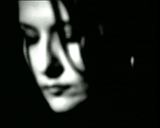
 Author of all texts
about mythology on
these web-pages is
Lidija Bajuk:
Author of all texts
about mythology on
these web-pages is
Lidija Bajuk:
|
lidija.bajuk@posluh.hr
scena.hgu.hr/lidija-bajuk/
- The Sky
- The Mountain
2. PERUNIKA
- Leluya
- Ball lightning
3. AQUARIUS
- Candlemen
WATER MAID
- Fairies
- Witches
4. DRAGON
- Water
SNAKE
- Bogorodica
(Rainbow)
5. GREEN GEORGE
- The Moon
- Corn Spirit
6. LEPA MARA
- Hair
- Embroidery
7. GRABANCIJAŠ
- Light
8. PESJANEK
- Forest
9. LITTLE RED HAT
(DWARF)
- The Cap, Little Hat
10. STRAHE & MRAKI
(GIANTS)
|
WITCHES
(Cop(e)rn(j)ice, babaroge, bahorice, bilfe,
ceprnice, čaratanke, čarnice, černice, čarobnice,
čarovnice, hrdroge, irudice, kamenice, kolere,
kozlačice, kudlačice, kuge, luce, more/morice/morine,
mure, nedobrice, noćnice, obrštarice, potvornice,
rogulje, smrde, smrti, strige/štri(n)ge, sušenice,
trovilice, tvarnice, upirine, uzme,
vade/vadine/vidine, vešče/viješće/višće/viške,
višćice/vištice/vještice, vihurendine, vijore,
vjetrušnice, vjetruštine, vlhve/vuhve, vračilje,
vračitelke, vragoduhe, vražarice, (v)ukodlačice,
vukozlačice)
|
|
If they want to damage the crops they pick the flowers off the plants. If they want to make the wine to go sour they blow on it and if they want to weaken the cattle they milk it in strange ways like salting the path which they go on before they return home, pulling an apron across the neighbour's field where the cows go to graze, by milking a string or feeding the faeces of their cattle to the neighbour's. They can also cause fire, hatred, abortion, disease (by blowing onto somebody and thus making them weak or putting their trace in a pumpkin and drying it in the smoke). They can cause plants, animals and people to be infertile, to change form or even die. If their spells are discovered, they should be burned immediately. Younger witches can make men, who did not return their love, mute and thus stop them from proposing to another woman. People whose eyebrows grow close together and men born on female days (Friday and Sunday) are under their influence. If you look at them, or if you talk to them before they talk to you they cannot harm you or cast a spell on you. Sometimes they shoot a young woman or a man wantonly. People from Medjimurje used to say about very skinny young men that the witches rode on them. It was believed that they were handsome young men who were conquered and bridled by witches who took them to their lairs on the mountain Ivanščica where they had to serve them. When they got tired of them, they set them free. Witches like to frighten young children in the night and suck their blood on the heel, even kill them with a bar and eat their heart. They are in a cannibalistic mood during Shrove-tide. They are very dangerous when somebody steps on their track, their urine and faeces or dish from which they eat. They are also very dangerous when they curse, pass near water where clothes are washed, on flowering meadows during the night (that is why you should not smell flowers in the night), crossings, rubbish heaps or under a chestnut tree which is their favourite meeting place, on Midsummer day (when they dance around the fern at midnight and cause it to flower) and on All Saint's day. Then they cause a storm and people or animals die from drowning or stroke. Women used to haste to spin all the tow of the spindle before Saturday evening because they believed that at that time the witches would take over their work. A witch is the strongest during the new moon. If an imprudent person gives them an egg at their request during the new moon, they will come under their spell. Witches are a big threat, especially to pregnant women and newborn babies who have not been christened yet. The babies never used to leave their room unless a nurse was with them, especially after sundown. They could be, nevertheless, protected from their evil influence. You could turn on the light, bring female herbs (thyme, yellow midsummer flowers, daisies) to the room, put a comb and man's trousers on the bed to trick the witch or put the placenta under the bed for three days and then throw it into flowing water. The last ritual prevents the witches from swapping the baby with another one. Witches and sorcerers from Medjimurje meet with other witches, especially with the ones from the hill Ivanščica, in order to exchange knowledge, arrange new evil doings and simply to eat and drink, dance and make love. Another Croatian mountain, called Klek, is a favourite meeting point for witches. It is believed in mountainous parts that avalanches happen in places where witches meet. Traditional stories tell that you can protect yourself from them with veils, by cutting the circle, the sun symbol, into the crib, by washing your hands in the morning, laughing out loud, getting drunk, spilling water, wearing your shirt or your coat inside out, wearing a ribbon, putting a broom upside down near the door, showing a naked female behind, having aromatic, thorny, poisonous or blessed plants like basil, peony, birch, ivy, celery, garlic, wild cherry, cornelian cherry, lily of the valley, gladiolus, hawthorn, mustard, oak, daisy, maple, sage, chamomile, juniper, dill, daisy, blackberry, linden, hazelnut, laurel, onion, violet, fern, wormwood, iris, rosemary, evergreen, wheat, yellow midsummer flowers or simply a green twig. You can also protect yourself by throwing a rooster's head over your head and over the roof, having dried horns on your door, having a charm with wolf's eyes (charms originate from eastern cultures), firing a shotgun filled with led taken out from shot game, wheat grain, having wax from blessed candles, preparing mysterious food and drinks in a strange way (for example putting ten walnuts, two apples and one egg in a clay pot together with nine loaves of bread and nine coals, ground and dissolved in water and live coals and chains from the hearth in the pot), having sharp objects (for example having a knife under the pillow, rammed into the house door, drawing three crosses in the air with a knife, throwing the knife into a whirlwind of dust at noon when the witches go to eat lunch or crossing the legs of an overturned table), cutting your finger, knitting (because the knitting needles cross when you knit), having a bridle (the witch turns into a mare if you bridle her), having a horse-shoe (the symbol of the moon), having a mirror (if a witch looks into a mirror she frightens herself), wearing gold necklaces, mountain crystal or a shell, having ritual bonfires, dancing, throwing salt into the flames, swinging on a branch of a holy tree in spring, having holy water, smoking the house with the smoke of a burned rope of the church bell, ringing the bell out of tune, wearing wether-bells (like the dancers of the old dance ''moreška'' on the island of Korčula wear around their ankle), saying certain words with special meaning and praying the Lord's prayer backwards, from the end to the beginning. The progenitors of witches are called ''vade''. Croatian words for quarrel ''zavaditi'' and ''posvaditi'' are obviously connected with them. The witches can revoke their magic spells. If a witch dies, a terrible wind starts to blow. Black hen peck before their funeral procession and there is a black mare next to their open grave. Women who have repented and confessed their evil deeds and are no longer witches are called ''očitovnice''. In good cases they become medicine women (''vještica'', ''witch'' means ''a skillful woman'') and in bad cases they become nightmares who no longer eat human flesh, but come to squeeze people and obstruct their breathing in the night. In each village in Medjimurje there used to be a medicine woman of whom it was said that she was a witch. People would visit her secretly seeking medicine or advice. Her main tools were hot water, medicinal herbs, a candle and strange chants. Her pay was bread, fat, eggs and grain. In pre-Christian times witches were psychics and they were priestesses. They used to dwell in shrines, i.e. huts or caves deep in the mountains or woods. They would tell fortune using broths, intestines of a victim, smoke, wind, herbs, marked sticks, etc. In ''The Witch's Law'', originating from 1484, the defenders of Christianity proclaimed them ''the priestesses of the demon church'' and their work as the doings of Satan, i.e. black magic as opposed to the church, God's laws and the white magic. Witch's trials began in the 14th century in Croatia and lasted until 1758 when the enlightenment era began and such trials were prohibited. Psychoanalysts consider witches to be the corrupted counterpoints to fairies and elves who represent the dark, lunar side of the human psyche. It is the subconscious torn between double standards and twisted forces of power imposed upon her. A person can control it only if he or she includes all the elements of the subconscious into the conscious. |